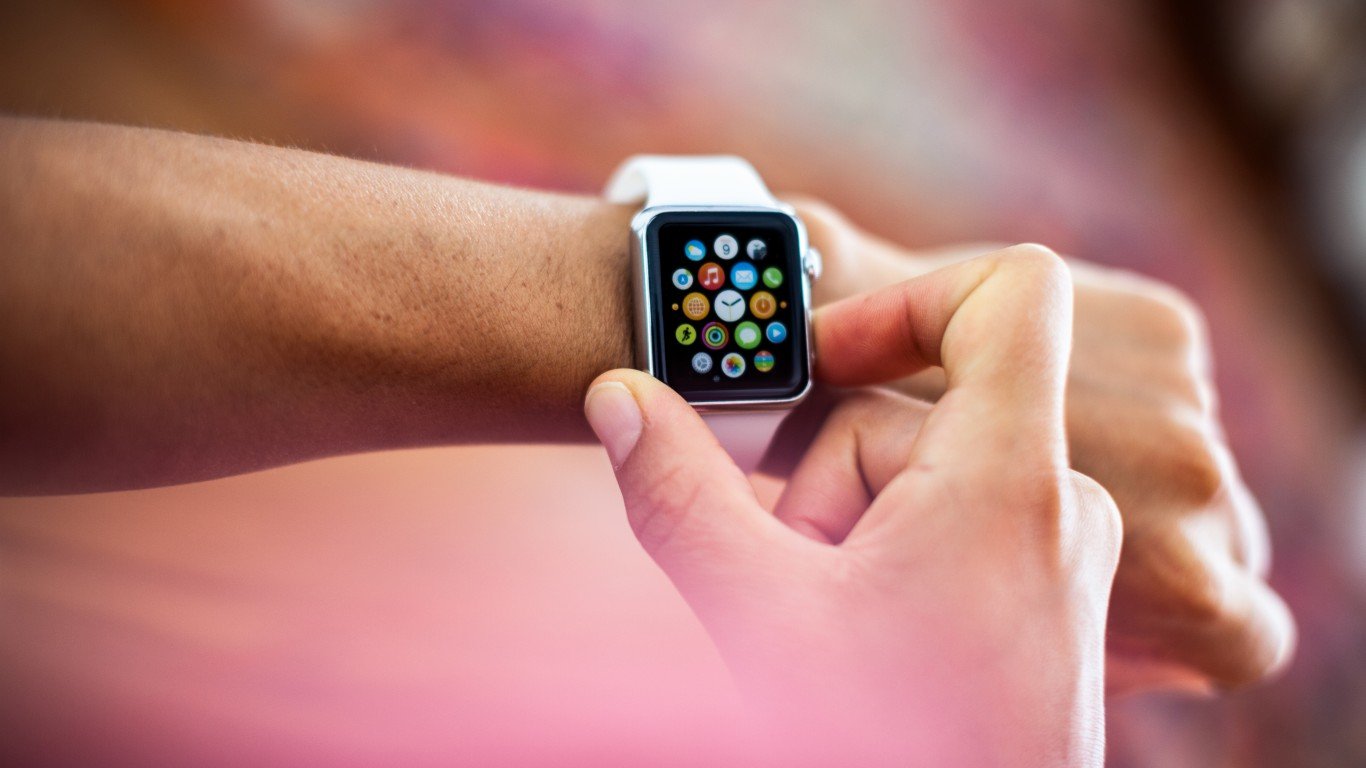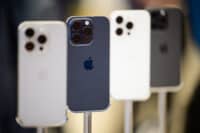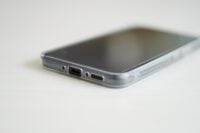

When Apple Inc. (NASDAQ: AAPL) reported second-fiscal quarter earnings on April 30, the company was able to boast of a 1% year-over-year increase in revenue. Admittedly not much, and not enough to move investors to lift Apple stock.
Upon closer inspection, however, investors liked the tech giant’s quarter better. Since the initial reaction, the stock’s trading about three points higher than it was before the earnings announcement.
Just to review: iPhone revenues fell by 7% year over year to just short of $29 billion, iPad sales were off 10% and Mac sales were down 3%. The big gainer was Wearables, up 23%, while the company’s Services business posted a gain of 17%. Those two categories accounted for about $20 billion in second-quarter revenues, with Wearables bringing in about $13.3 billion and Services about $6.3 billion.
CEO Tim Cook attributed improved Wearable sales primarily to the company’s AirPods, but there is now independent evidence that Apple Watch sales were better as well.
Apple Watch Accounted for 55% Smartwatch Shipments
In a report released on Wednesday, research firm Strategy Analytics said that global shipments of smartwatches rose by 20.2% year over year in the first calendar quarter of 2020 to 13.7 million units.
Apple Watch took 55.5% of all sales, shipping 7.6 million units, an increase of 22.6% year over year from 6.2 million Watches shipped in the same period of last year.
Neil Mawston, executive director at Strategy Analytics, commented:
Apple’s global smartwatch marketshare has grown from 54 percent to 55 percent, its highest level for two years. Apple Watch continues to fend off strong competition from hungry rivals like Garmin and Samsung. Apple Watch owns half the worldwide smartwatch market and remains the clear industry leader.
Competitors are not even close. Number two Samsung shipped 1.9 million smartwatches in the quarter, up from 1.7 million a year ago. Third-place Garmin Ltd. (NASDAQ: GRMN) shipped 1.1 million, up from 800,000 in the same quarter last year.
Samsung’s total was good for market share of 13.9%, while Garmin snagged an 8.0% share. Samsung’s share dropped a full point while Garmin’s rose by an equal amount. Other vendors accounted for 3.1 million units and a 22.6% share.
How the Coronavirus Pandemic Could Affect Smartwatches
In its second-quarter 10-K, Apple noted: “The COVID-19 pandemic and the measures taken by many countries in response have adversely affected and could in the future materially adversely impact the Company’s business, results of operations, financial condition and stock price.”
Apple temporarily closed all its retail stores outside of China and has required nearly all its employees to work remotely. The company also noted that many of its resellers’ stores are closed, and it added a cautionary note:
Additional future impacts on the Company may include, but are not limited to, material adverse effects on: demand for the Company’s products and services; the Company’s supply chain and sales and distribution channels; the Company’s ability to execute its strategic plans; and the Company’s profitability and cost structure.
Woody Oh, director at Strategy Analytics, said the firm is expecting second calendar quarter shipments to “slow sharply” but sees a “decent rebound” in the second half of the year. He added:
Smartwatches continue to have excellent long-term prospects, as younger and older people will become more health-conscious in a post-virus world. Smartwatches can monitor vital health signs, such as oxygen levels, and consumers may find comfort in having a virtual health assistant strapped to their wrist.
Is Apple Watch 6 on Its Way?
In a normal year, Apple would release its next generation of the Watch this fall. Some new features being rumored are an anxiety monitoring function and sleep tracking. Apple also recently received a patent on a fall detection feature. That feature may have to wait for another generation.
One feature that could be activated for a fall release is a blood-oxygen monitor that could detect when a wearer’s blood-oxygen level falls below an acceptable level. Apple Watch already contains the pulse oximetry tools needed to monitor blood-oxygen levels, but the function is disabled. Richard Levitan, an emergency room doctor, described the importance of pulse oximetry in combating COVID-19 in a New York Times op-ed in April.
Apple reportedly has delayed implementing the feature until it can get U.S. Food and Drug Administration (FDA) approval, and that is thought to be in the works.
Apple has a cash pile of around $84 billion and has committed to a boost of $50 billion to its share buyback program. Armed with that kind of cash and an expected 5G iPhone along with a new Watch, Apple is a good bet to navigate safely through today’s choppy waters.
Sponsored: Want to Retire Early? Here’s a Great First Step
Want retirement to come a few years earlier than you’d planned? Orare you ready to retire now, but want an extra set of eyes on your finances?
Now you can speak with up to 3 financial experts in your area for FREE. By simply clicking here you can begin to match with financial professionals who can help you build your plan to retire early. And the best part? The first conversation with them is free.
Click here to match with up to 3 financial pros who would be excited to help you make financial decisions.
Thank you for reading! Have some feedback for us?
Contact the 24/7 Wall St. editorial team.



